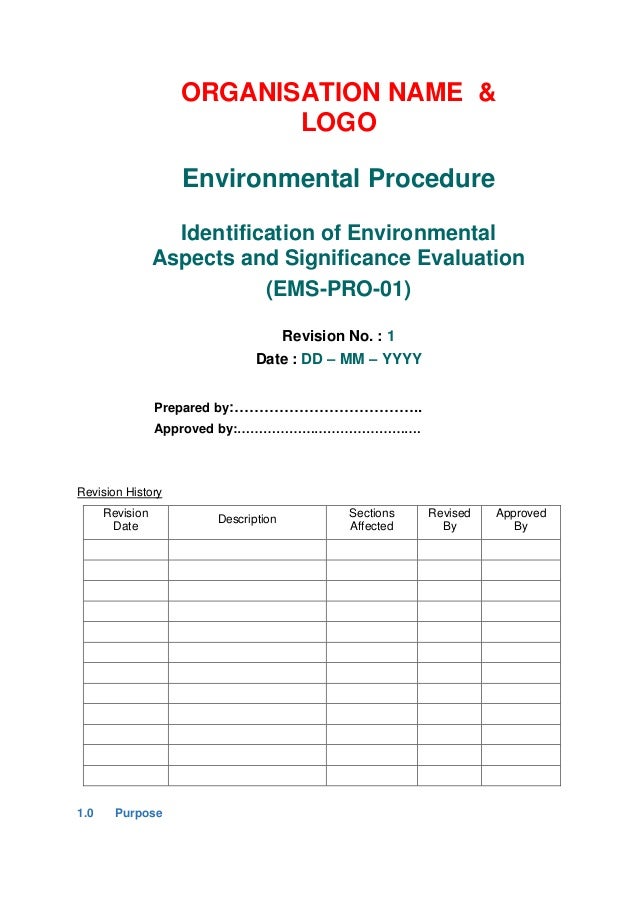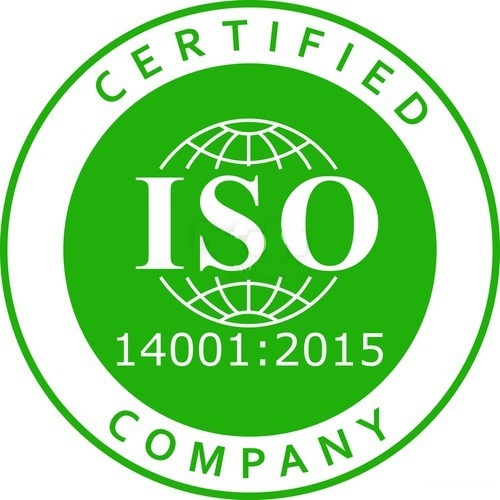This 14001: 2015 Certification provides and assures a company’s stakeholders that the environmental management system of the company meets international environmental standards. ISO defines an EMS as a part of the management system used to manage environmental aspects, fulfill obligations, and address the risk and opportunity.
- Annex B Correspondence between ISO and ISO. The success of an environmental management system depends on commitment from all levels.
- ISO 14001 helps to identify potential environmental issues and eliminate or reduce them. An environmental management system (EMS) is a long-term investment for the viability of your organisation and it can help you to become more effective in achieving environmental goals.
Purchase ISO 14001:2015
Published hard copy
PDF e-standard
ISO 14001 on ASQTV™
ISO 14001 is the international standard that specifies requirements for an effective environmental management system (EMS). It provides a framework that an organization can follow, rather than establishing environmental performance requirements.
Part of the ISO 14000 family of standards on environmental management, ISO 14001 is a voluntary standard that organizations can certify to. Integrating it with other management systems standards, most commonly ISO 9001, can further assist in accomplishing organizational goals.
The International Organization for Standardization (ISO) defines an environmental management system as “part of the management system used to manage environmental aspects, fulfill compliance obligations, and address risks and opportunities.” The framework in the ISO 14001 standard can be used within a plan-do-check-act (PDCA) approach to continuous improvement.
WHO SHOULD USE The ISO 14001:2015 revision?
ISO 14001:2015 should be used by any organization that wishes to set up, improve, or maintain an environmental management system to conform with its established environmental policy and requirements. The requirements of the standard can be incorporated into any environmental management system, the extent to which is determined by several factors including the organization’s industry, environmental policy, products and service offerings, and location.
ISO 14001:2015 is relevant to all organizations, regardless of size, location, sector, or industry.
What topics does ISO 14001:2015 cover?
At the highest level, ISO 14001:2015 covers the following topics with regard to environmental management systems:
Iso 14001 2015 Requirements
- Context of the organization
- Leadership
- Planning
- Support
- Operation
- Performance evaluation
- Improvement
ISO 14001 Environmental Management Systems (EMS) Framework
14001:2004 vs. 14001:2015
The 2015 revision of ISO 14001 introduces a number of changes from previous versions. A detailed explanation of the changes can be found in this ISO 14001 presentation by the ASQ Energy and Environmental Division.
As part of the effort to structure all ISO standards in the same way, the ISO 14001:2015 revisions include incorporating a required high-level structure, using mandatory definitions, and incorporating common standards requirements and clauses.
10 major areas of impact of the 2015 revision:
- Expansion in EMS coverage and scope
- Required interactions with external parties
- New requirements for leadership engagement
- Expanded legal compliance requirements
- Need for risk-based planning and controls
- New documentation requirements
- Expanded operational control requirements
- Changes in competence and awareness requirements
- Impacts on the internal audit program
- Increased certification costs
Integrating ISO 9001 and ISO 14001
Integrating management systems standards can increase focus while reducing the potential for confusion. Elements of ISO 9001 can be enhanced with corresponding components of ISO 14001.
Responsibilities for the combined standards might include:
- Drafting a policy statement and quantifiable objectives
- Setting up organizational charts and job descriptions
- Providing adequate resources
- Managing documentation for both standards in a single document control system
- Appointing a management representative as well as coordinators for the quality and environmental managements systems
When adding ISO 14001 components to those of ISO 9001, planning must be expanded to deal with environmental impacts, and the inspection and test systems modified to cover environmental conformance. The organization must meet the environmental expectations of customers and the government, and it must incorporate environmental management elements into internal audit programs and training sessions.

ISO 14001 can be integrated with standards besides ISO 9001 in order to provide synergy with other systems, such as OHSAS 18001 and ISO 13485.
ในระบบ Ems (iso 14001) Version 2015มีข้อกําหนดอะไรบ้าง
What are the Benefits of ISO 14001:2015?
Using ISO 14001:2015 has many benefits for organizations with environmental management systems. Organizations and companies find that using the standard helps them:
- Improve resource efficiency
- Reduce waste
- Drive down costs
- Provide assurance that environmental impact is being measured
- Gain competitive advantage in supply chain design
- Increase new business opportunities
- Meet legal obligations
- Increase stakeholder and customer trust
- Improve overall environmental impact
- Manage environmental obligations with consistency
ISO 14001 Certification
Organizations that have already achieved ISO 14001 certification are encouraged to transition to the 2015 version. Organizations will have a three-year transition period to update their environmental management systems to the new standard.
To get started with ISO 14001:2015:
Iso 14001 2015 Training Ppt
- Review existing quality management system requirements (ISO 9001:2015)
- Purchase ISO 14001:2015
- Get ISO 14001 training
- Certify to ISO 14001
Ems Manual Iso 14001:2015
ISO 14000 Family of Standards

ISO 14001 is the most popular standard of the ISO 14000 family, which also includes standards such as the following:
- ISO 14004:2016 - Environmental Management Systems - General Guidelines On Implementation
- ISO 14006:2011 - Environmental Management Systems - Guidelines For Incorporating Ecodesign
- ISO 14050:2009 - Environmental Management - Vocabulary
- ISO 14063:2006 - Environmental Management - Environmental Communication - Guidelines And Examples
ISO 14001 Resources
You can also search articles, case studies, and publications for ISO 14001 resources.
Books
Iso 14001 2015 Standard
Articles and Case Studies
ISO 14001 Standard: Literature Review And Theory-Based Research Agenda (Quality Management Journal) Environmental sustainability has gained momentum in the business world and academia. After about 20 years of research in this field, this paper presents a holistic literature review specifically focused on ISO 14001, which is widely considered the most important environmental certification.
Stewardship And Sustainability: Serigraph's Journey To ISO 14001 (Journal for Quality and Participation) Leaders of Serigraph understand that sustainability and social responsibility require the simultaneous promotion of equitable economic growth, environmental protection, and social well-being. Serigraph uses ISO 14001, Six Sigma, and lean as its templates for environmental and sustainability improvement.
A Framework For The Development Of An Environmental Management System: A Case Study In A Thermal Power Plant (Quality Engineering) Questions regarding implementation of ISO 14001 prompted NP Power, the electric power company of New Brunswick, Canada, to develop a framework to assess its compliance to the standards.

Since the publication of the new revision of ISO 14001 last month, many people are wondering what documents are mandatory in this new 2015 revision. How many documents are required?
So, here is the list of requirements for documentation that you need to know – below you will see not only mandatory documents, but also the most commonly used documents for ISO 14001 implementation.
Mandatory documents and records required by ISO 14001:2015
Here are the documents you need to produce if you want to be compliant with ISO 14001:
- Scope of the EMS (clause 4.3)
- Environmental Policy (clause 5.2)
- Risk and Opportunities to be Addressed and Processes Needed (clause 6.1.1)
- Criteria for Evaluation of Significant Environmental Aspects (clause 6.1.2)
- Environmental Aspects with Associated Environmental Impacts (clause 6.1.2)
- Significant Environmental Aspects (clause 6.1.2)
- Compliance Obligations Document (clause 6.1.3)
- Environmental Objectives and Plans for Achieving Them (clause 6.2)
- Operational Control (clause 8.1)
- Emergency Preparedness and Response (clause 8.2)
And here are the mandatory records if you want to be compliant with ISO 14001:
- Records of Training, Skills, Experience and Qualifications (clause 7.2)
- Evidence of Communication (clause 7.4)
- Monitoring and Measurement Results (clause 9.1.1)
- Evidence of the Compliance Evaluation Result(s) (clause 9.1.2)
- Internal Audit Program (clause 9.2)
- Results of Internal Audits (clause 9.2)
- Results of the Management Review (clause 9.3)
- Results of Corrective Actions (clause 10.2)
Non-mandatory documents
There are numerous non-mandatory documents that can be used for ISO 14001 implementation. Although they are not required, I find these non-mandatory documents to be most commonly used:
- Procedure for Determining Context of the Organization and Interested Parties (clauses 4.1 and 4.2)
- Procedure for Identification and Evaluation of Environmental Aspects and Risks (clauses 6.1.1 and 6.1.2)
- Competence, Training and Awareness procedure (clauses 7.2 and 7.3)
- Procedure for Communication (clause 7.4)
- Procedure for Document and Record control (clause 7.5)
- Procedure for Internal Audit (clause 9.2)
- Procedure for Management Review (clause 9.3)
- Procedure for Management of Nonconformities and Corrective actions (clause 10.2)
So, this is it – what do you think? Is this too much to write? Do these documents cover all aspects of an Environmental Management System according to ISO 14001:2015?
Click here to download a white paper: Checklist of Mandatory Documentation Required by ISO 14001:2015, with more detailed information on the most common ways for structuring and implementing mandatory documents and records.
If you enjoyed this article, subscribe for updates
Iso 14001 2015 Ems Manual Template
Improve your knowledge with our free resources on ISO 14001 standard.
2015 Ems Iso 14001 Awareness Training Ppt
You may unsubscribe at any time.
For more information on what personal data we collect, why we need it, what we do with it, how long we keep it, and what are your rights, see this Privacy Notice.
